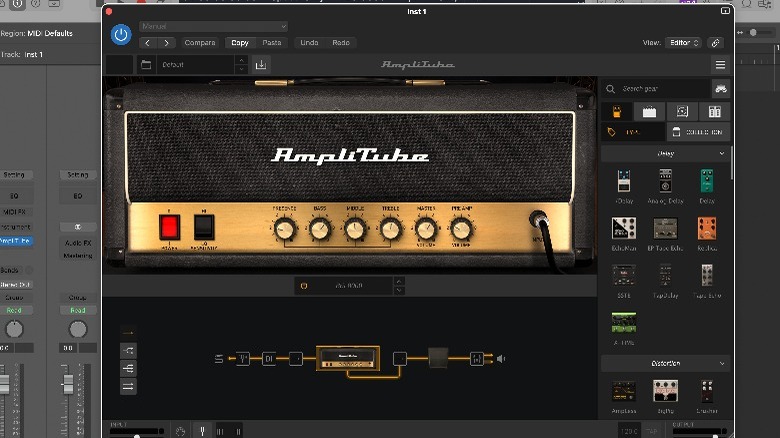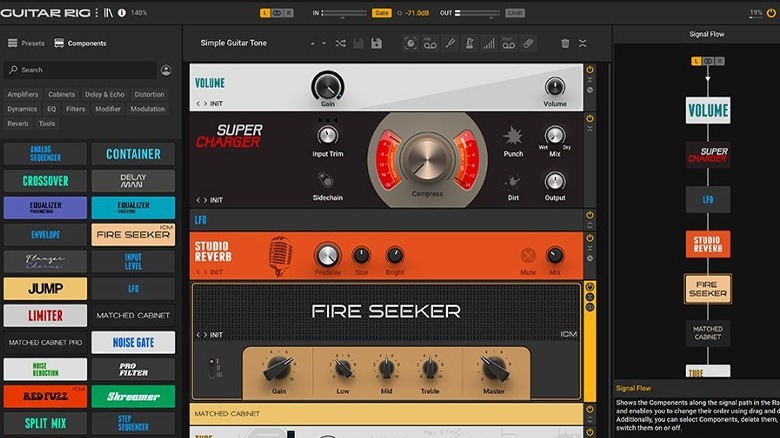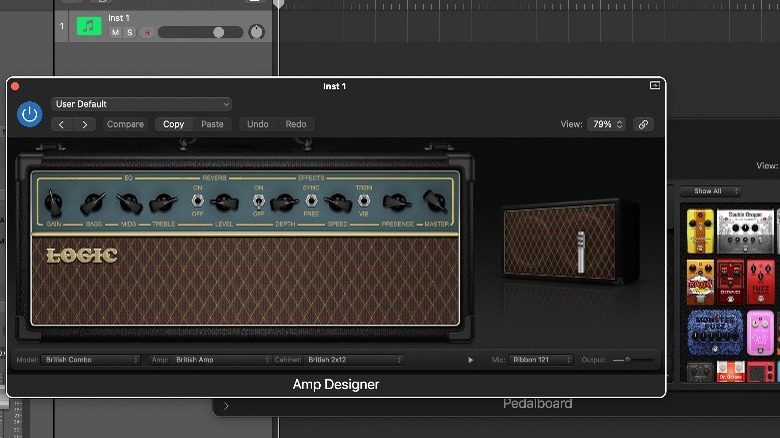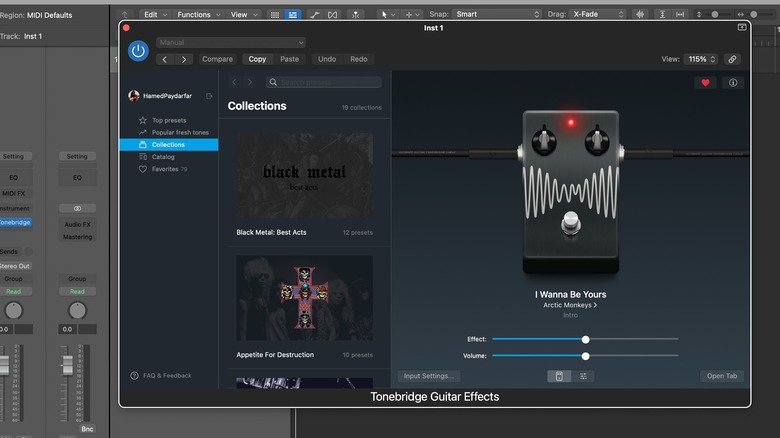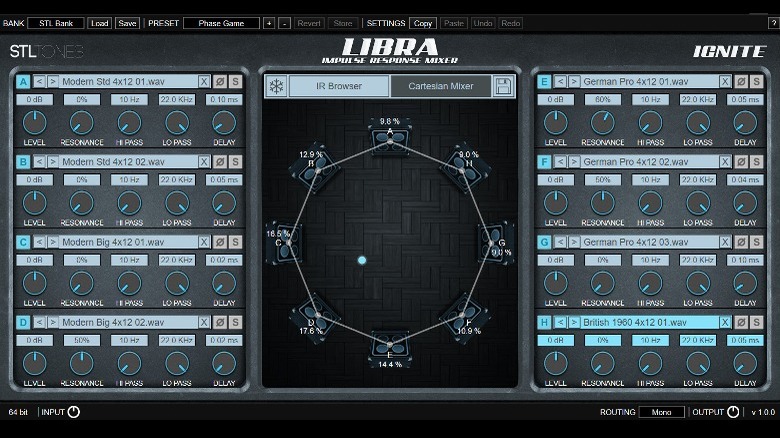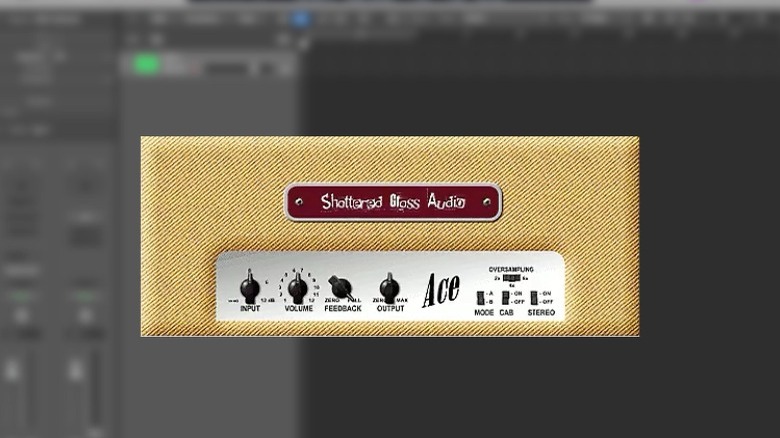6 Of The Best Free Guitar Amp Emulator Plugins
Getting those precise tonal characteristics you're after for a guitar track is a tricky task. Whether you're a producer capturing tracks for a project or a hobbyist playing the guitar, you should know that audio processing is just as important as your skills on the fretboard for getting desirable results.
Traditionally, guitarists wired their instruments to a bunch of analog effect pedals, connected the whole rig to a tube amplifier, and put a microphone in front of the amp cabinet to capture their desired sound. However, with the advancement of recording and sound-manipulating technologies, most of these steps can be done digitally using a computer, an audio interface, and a digital audio workstation (DAW).
While the digital world has made it easier than ever to access these tools, the plethora of options available on the internet — both free and paid — can be quite overwhelming. If you want to expand your arsenal as a musician and electric guitar player without spending a fortune on expensive gear, free guitar amp emulator plugins can be excellent options. Without further ado, let's take a look at six of the best free guitar amp emulator plugins you can install on your DAW of choice.
The content in this post comes from the writer's personal experience as a multi-instrumentalist, music producer, and songwriter with over eight years of experience in the music scene. Moreover, real user reviews have been used to ensure this article includes a diverse list of options for different playing styles and purposes.
IK Multimedia AmpliTube 5 CS
The AmpliTube 5 from IK Multimedia is arguably the most popular guitar amp simulator plugin on the market. Guitar World magazine dubbed the AmpliTube 5 Max the best amp simulator for 2024. However, the Max version comes with a hefty $600 price tag.
IK Multimedia offers the AmpliTube 5 in four different tiers, with the CS being the slimline version that enthusiasts can install for free. It comes with 42 essential simulated gear, including amplifiers, effect pedals, cabinets, mics, and rack FX. The quality you get with the CS is the same as that of the paid versions of the AmpliTube 5, and it is one of the most authentic-sounding plugins on the market.
Another advantage of this plugin is its high-quality and realistic user interface. All the tools and gear have distinctive designs, making it easier to navigate through the plugin. Moreover, extensive routing possibilities allow users to set up their virtual rig however they want. You can add pre- and post-amplification pedal effects, route your guitar signal to two amps simultaneously, and relocate the microphone's position in front of the cabinet.
Moreover, you can use AmpliTube 5 both as a standalone app and as a third-party plugin in your DAW. You should bear in mind that AmpliTube can be quite processor-hungry and result in unwanted latencies if your DAW session is already demanding and complex. You can download and install AmpliTube 5 CS for Windows and Mac from IK Multimedia's official website.
Native Instruments Guitar Rig 7 Player
Native Instruments Guitar Rig 7 is the strongest competition out there for IK Multimedia's AmpliTube 5. Both options offer excellent sound qualities with myriad options. At the end of the day, choosing one as your daily drive boils down to personal preference and workflow. In my experience, the Guitar Rig 7 offers better-sounding clean and overdriven presets, whereas the AmpliTube 5 shines best in heavily distorted tones.
Similar to its rival, Native Instruments offers Guitar Rig 7 in different tires, with the "Player" being the free version. The Guitar Rig 7 Player comes as a collection of studio tools taken from the paid version. The collection includes a British-style tube amp with a matched cabinet, 13 effect pedals, and 50 presets.
While being feature-rich, one of the advantages of this plugin is its simple design language throughout the interface. Even novice users can effortlessly take advantage of their abilities and tweak their tone. Again, the Guitar Rig 7 comes both as a standalone app and a third-party plugin you can open on any digital audio workstation. Similar to the AmpliTube 5, the Native Instruments Guitar Rig 7 can require a lot of processing power from your computer.
Apple GarageBand's Stock Plugins
Apple's GarageBand is a well-known digital audio workstation that comes free with Apple devices. Available for MacOS, iOS, and iPadOS, GarageBand offers an impressive list of features for musicians looking for a user-friendly system to execute their sonic ideas.
Among the various tools available, GarageBand's Pedalboard and Amp Designer plugins are two feature-rich plugins you can use to shape the tone of your guitar. The Pedalboard features 23 effect pedals covering the essentials, including reverb, delay, chorus, overdrive, and tremolo. Moreover, the Amp Designer gives you access to over 25 amps (each with adjustable parameters), 26 cabinets, and seven microphones to simulate a real studio environment.
One of the advantages of GarageBand's stock plugins is the variety of sound you can create within the digital audio workstation. With all of those effects and amp options, GarageBand's stock plugins give you much more flexibility than most other options on this list. Moreover, since these are native plugins, they are significantly more CPU-efficient compared to third-party alternatives.
On the other hand, the obvious downside of GarageBand is that it is exclusive to Apple's ecosystem. So, if you're a Windows or Android user, you can't take advantage of this free-to-use DAW. Also, while the clean and overdriven presets sound impressively dynamic and fill out the stereo spectrum decently, distorted effects sound flat and boxy. To plug your guitar or bass into your iPhone, you can use an iRig 2 guitar interface.
Ultimate Guitar ToneBridge
Most guitar players know Ultimate Guitar from their website and mobile app, which provides tablature and music sheets for popular songs. Another useful tool that UG creates is the ToneBridge app, which can be used both as a standalone app and a third-party plugin inside a DAW.
The feature that sets ToneBridge apart from the rest of the competition is the ability to emulate guitar and bass sounds inspired by famous songs. If you're covering songs and want ready-to-go presets to match the part you're playing, Ultimate Guitar's ToneBridge can be a lifesaver.
Besides an extensive preset library, you can use a plethora of tools, including pedals, amps, cabinets, and microphones, to build your own presets. What's more, the plugin's preset library is always expanding, and users can submit their own presets for others to use. The possibilities with the ToneBridge are virtually endless.
On the other hand, the biggest disadvantage of Ultimate Guitar's ToneBridge is its sound quality. The output you get from this plugin is decent enough for jam sessions, practice sessions, and small venues. However, we wouldn't recommend using it for tracking crisp and professional guitar parts for your song. You can download ToneBridge on the App Store for iPhone, Mac, and iPad. Moreover, you can head over to Google Play to install it on Android or Windows.
Ignite Amps Emissary
If you're a metal player looking for amp emulators that can give you killer distorted presets, the Ignite Amps Emissary should definitely be under your radar. The Emissary plugin emulates a custom dual-channel guitar tube amplifier, which has been developed to accurately model its real counterpart.
It's not only for metal players, though. The clean and overdriven channels you can get are impressively pristine and up-to-standard. If you're a modern player, you'll definitely appreciate the tonal characteristics of these presets. However, what stands out the most is its mean and bone-crushing distortion.
Although the plugin is feature-rich and has an eye-catching UI, it is significantly more CPU-efficient when compared to other amp simulator plugins, such as the AmpliTube 5. Because of this, Ignite Amp's Emissary is an excellent choice for playing live and jamming without dealing with annoying latency issues. Moreover, the sound quality that this plugin offers makes it suitable for tracking and mixing. The primary downside of the Emissary plugin is that, compared to some other free plugins, it lacks variety in effect pedals and amp models. You can download this VST for Mac and Windows from Ignite Amps' official website.
Shattered Glass Audio Ace
Last but not least, the Ace plugin from Shattered Glass Audio makes it to this list as an authentic-sounding and true-to-the-original guitar amp emulator. Inspired by the legendary Fender Tweed series of amps from the '40s to the '60s, the Ace plugin is an excellent choice for musicians looking for that classic Fender tone.
The interface resembles a Fender amp's cabinet, with knobs and buttons to control input, volume, feedback, and output. While most other amp simulators focus on overdriven and distorted sounds, Shatter Glass Audio's Ace plugin is a nice alternative for vintage, clean tones.
Besides the nice clean output you get, another advantage of this plugin is that it is very easy on the CPU, so you should face no latency issues when running this plugin with low I/O buffer sizes. On the other hand, the disadvantage is that the Ace Plugin is pretty limited since it focuses on delivering only one emulated amp model. Moreover, it is only available as a third-party plugin in a digital audio workstation, so you can't use it as a standalone app. The Shattered Glass Audio Ace plugin is available for both Windows and Mac users.
Methodology
The information provided in this post is based on the writer's personal experience as a guitar player and music producer. All the mentioned plugins have been tested on an M1 Mac device running Logic Pro, GarageBand, and Ableton Live.
Moreover, real user reviews have been taken into account to ensure this article features a diverse list of plugins for different genres. To ensure the list appeals to a larger group of musicians, reviews from credible sources, such as the Guitar World magazine, have been used as inspiration to compose this list.

